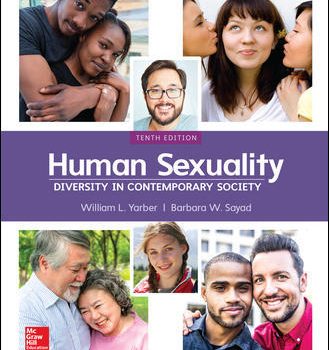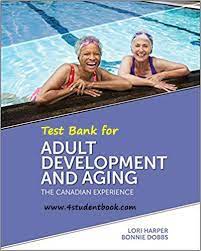Test Bank For Motivation Theory Research And Application, International Edition, 6th Edition by Herbert L
CHAPTER 2 – Instructor’s Manual
Genetic Contributions to Motivated Behavior
Chapter Preview
This chapter is concerned with the following questions:
1. Are some motives genetic in human and nonhuman animals?
2. What did early instinct theories emphasize?
3. How does Classical Ethology explain behavior?
4. How do more recent genetic theories explain behavior?
Chapter Outline
Early Instinct Theories
William James
William McDougall
Criticisms of the Early Instinct Theories
Classical Ethology
Ethological Terms
Key Stimuli
Fixed Action Patterns
Intention Movements and Social Releasers
Motivational Conflict
Reaction Chains
Imprinting
Criticisms of the Classical Ethological Approach
Some Modifications to the Basic Ideas of Ethology
Human Ethology
Facial Expressions
Shyness
Additional Innate Behaviors
Staring
Speech
Ethological Concepts Concerning Sex and Aggression
Modern Ethological Approaches
Behavioral Ecology
Cognitive Ethology
Evolutionary Psychology
Class Lecture Ideas
1. Early Instinct Theories of James and McDougall
Students are often confused by the term instinct, since it is used in a wide variety of situations, many of which are nonscientific. Thus it is often instructive to begin with the definition of instinct. Discuss the definition provided in the textbook, as well as definitions from dictionaries and biology textbooks. Make sure students understand the basic premise that heredity is responsible for an instinctive behavior.
Review the instinct theory of William James. Carefully describe how James defined instinct and how he explained how instincts could be modified. Include the list of human instincts proposed by James.
Review the instinct theory of William McDougall. Include his components (cognitive, affective, and conative) of an instinct. Include the list of instincts proposed by McDougall. Compare James and McDougall’s theories.
Finally, review the criticisms of the early instinct theories.
2. Ethological Terms
Many psychology students will not be familiar with ethology, so it helps to provide background information on ethology and describe the terms used by ethologists. A lecture on fixed action patterns is one of the most relevant to the field of motivation.
3. Important People in Ethology
A lecture on some of the early ethologists helps students connect with the textbook material. The 1973 Nobel Prize for Physiology or Medicine was awarded to three pioneers who studied animal behavior: Konrad Lorenz, Niko Tinbergen, and Karl Von Frisch. There is much information on the important research of these early scientists. http://www.nobelprize.org/nobel_prizes/medicine/laureates/1973/press.html
4. Imprinting
Imprinting is an important topic in ethology. Review the characteristics of imprinting noted by Lorenz. Some researchers restrict the term imprinting to birds, and use the term attachment when using mammals.
5. Comparative Psychology–Ethology
In order to help students understand ethology, you might consider a brief lecture comparing ethology and comparative psychology. For example, comparative psychology: American, laboratory, learning, mammals; ethology: European, field, instinct, fish/insects/birds.
6. Concept of Preparedness
Martin Seligman (1970) proposed the concept of preparedness. He categorized behavior into prepared, contra prepared, and unprepared. Describe his concept in more depth, and give examples for students.
7. Evolutionary Psychology
If you did not lecture on evolutionary psychology from first chapter, this would be a good time for a lecture on it. The theory of evolutionary psychology uses the principle of natural selection to study how adaptive human behavior and psychological mechanisms have developed to solve specific environmental problems. Carefully present the concept of evolutionary psychology, including sex differences in mate selection in people. A good source of information is David Buss (2012), Evolutionary psychology: The new science of the mind, 4th ed., published by Allyn-Bacon.
Class Activities
1. Ethogram
An ethogram is a description of all the behaviors shown by a species. A good exercise to develop observational skills and an understanding of animal motivation is to ask students to study a group of animals. You could let students find their own subjects or you might provide a group of animals for them to observe. Several hamsters, gerbils, or mice living in an aquarium are ideal.
2. Observation at a Zoo
If appropriate, an interesting assignment is to observe animals in a zoo. Let students choose the species. They should record behavior and then attempt to determine motivation.
An alternative might be to observe behavior online of a webcam at a zoo or animal park. Or you might show a video of animal behavior and ask students to make observations and analysis of what they see.
3. Animal Behavior Video
One way to introduce ethology is to show a video of the research of the ethological pioneers (Tinbergen, Lorenz, or Von Frisch). For example, “Biology, Brain and Behavior – Questions About Behavior” demonstrates Tinbergen’s four ethology questions on behavior. Or the “Trials of Life” animal behavior series hosted by David Attenborough is an excellent way to introduce students to animal behavior.
4. Nature–Nurture Debate
Divide the class into two groups and have each group take a position in the nature–nurture debate. One side is to argue for the importance of learning and experience, and the other side emphasizes instinct and heredity.
5. The Eyebrow Flick
Eibl-Eibesfeldt (1972) found that the eyebrow flick is a universal greeting ceremony in humans. Have students conduct an observational study of students greeting each other on campus. After collecting data from 20 pairs of people, calculate the percentage that show the eyebrow flick greeting. Are there any sex differences?









Reviews
There are no reviews yet.